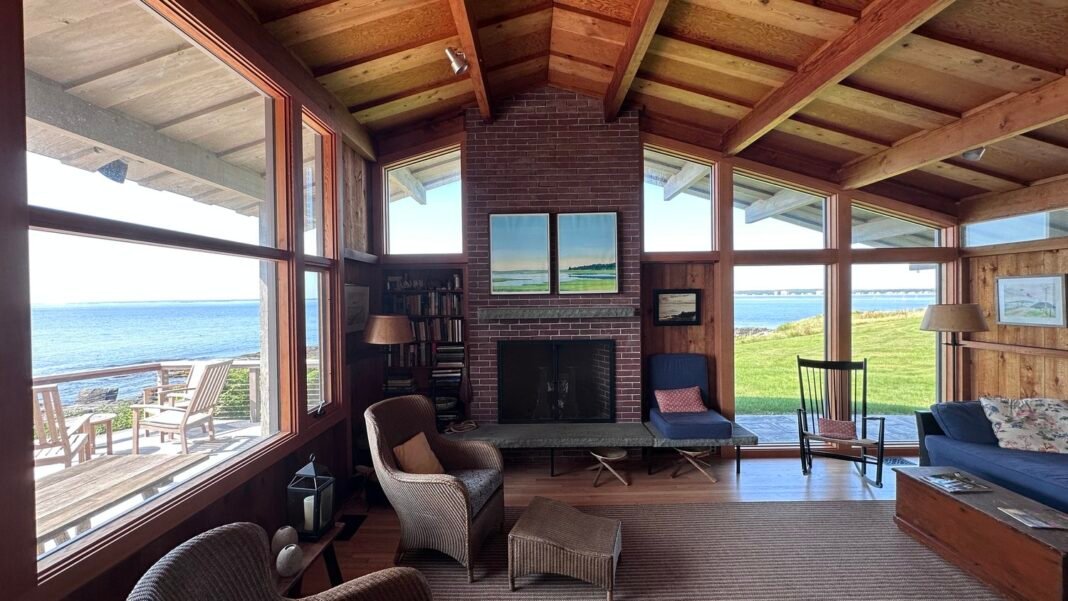Sustainable design services are gaining widespread attention due to their potential to address the growing environmental challenges we face today. These services go beyond simply constructing energy-efficient buildings—they focus on creating long-lasting, environmentally responsible designs that contribute to both ecological balance and energy conservation. By integrating sustainable practices into design, homeowners and businesses can reduce their carbon footprint, save on energy costs, and support a greener planet. In this article, we’ll explore how sustainable designs promote long-term environmental benefits, showcasing their impact on energy efficiency, resource conservation, and waste reduction.
The Importance of Sustainable Design in Today’s World
Unlike traditional designs that often prioritize aesthetics and cost over environmental concerns, sustainable design balances these elements with eco-friendly practices. These services aim to reduce carbon emissions, conserve natural resources, and create spaces that contribute positively to the surrounding environment.
As climate change becomes an increasing concern, sustainable design is no longer a luxury but a necessity. Adopting green design practices helps address several urgent issues, such as rising energy consumption, habitat destruction, and the depletion of natural resources. It also supports the health and well-being of the people who live and work in these spaces by promoting cleaner air, natural light, and healthier materials.
Reducing Consumption and Lowering Emissions
Sustainable building designs are centered on minimizing energy consumption while ensuring that buildings remain comfortable and functional. This is achieved through strategies like passive solar heating, high-performance insulation, and energy-efficient windows and appliances.
Solar panels, wind turbines, and geothermal systems are often integrated into sustainable designs, reducing the dependency on fossil fuels. As a result, energy bills are lowered, and the carbon footprint of the building is significantly reduced.
Moreover, energy-efficient buildings have a longer life span, requiring less maintenance and fewer repairs. This not only saves money for homeowners and businesses but also reduces the need for additional resources, supporting overall environmental sustainability.
Sustainable Materials: A Key to Resource Conservation
Traditional construction methods often rely on non-renewable resources like timber, cement, and steel, which contribute to environmental degradation. In contrast, sustainable design prioritizes the use of renewable, locally sourced, and recycled materials.
The use of reclaimed wood, recycled metal, and low-impact materials such as bamboo or cork, require less energy to produce and have a lower environmental footprint. These materials not only conserve valuable resources but also reduce the environmental impact of manufacturing and transportation.
Waste Reduction: Minimizing Construction and Operational Waste
Construction sites are notorious for producing large amounts of waste, including scrap materials, packaging, and debris. Modern architectural design firms aim to minimize this waste by incorporating strategies like prefabrication and modular construction, which reduce material waste during the building process.
Incorporating systems that reduce water and energy waste, efficient plumbing systems, rainwater harvesting, and greywater recycling are just a few examples of how sustainable buildings can significantly reduce water consumption. Similarly, smart building technologies can help monitor energy usage and reduce wasteful practices, contributing to a more sustainable future.
Creating Healthier Living Environments
By using non-toxic materials and promoting good indoor air quality, sustainable buildings create healthier environments that are less likely to cause respiratory problems or other health issues.
Natural ventilation, proper insulation, and the use of low-VOC (volatile organic compound) paints and finishes are just a few examples of how sustainable design can improve indoor air quality. Additionally, by incorporating natural light into the design, sustainable buildings reduce the need for artificial lighting, which has been linked to better mood, productivity, and overall well-being.
When considering the long-term benefits of sustainable design, it’s clear that these designs have the power to improve not only environmental health but also the physical and mental well-being of the people who inhabit them.
Long-Term Economic Benefits of Sustainable Design
By using energy-efficient technologies, sustainable materials, and waste-reducing practices, property owners can save a significant amount of money over the life of the building. Reduced energy and water bills, as well as lower maintenance costs, lead to substantial savings that outweigh the initial investment.
Moreover, buildings designed with sustainability in mind often have higher property values and can attract more buyers or tenants. This makes them a wise long-term investment for homeowners, businesses, and developers alike.
Sustainable Design is the Key to a Greener Future
Sustainable design services are designed to reduce energy consumption and conserve resources to minimize waste and support biodiversity. By integrating these practices into building design, we can create spaces that not only meet our needs but also contribute to a healthier planet for future generations.
If you’re looking to incorporate sustainable design into your home or commercial project, consider working with experts like Hellbent Design Studio. Their commitment to innovative, eco-friendly design ensures that your project will promote environmental sustainability while enhancing the comfort and efficiency of your space.



